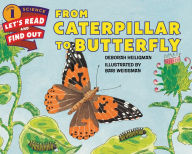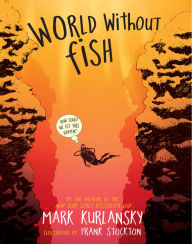Phineas Gage was truly a man with a hole in his head. Phineas, a railroad construction foreman, was blasting rock near Cavendish, Vermont, in 1848 when a thirteen-pound iron rod was shot through his brain. Miraculously, he survived to live another eleven years and become a textbook case in brain science. At the time, Phineas Gage seemed to completely recover from his accident. He could walk, talk, work, and travel, but he was changed. Gage "was no longer Gage," said his Vermont doctor, meaning that the old Phineas was dependable and well liked, and the new Phineas was crude and unpredictable. His case astonished doctors in his day and still fascinates doctors today. What happened and what didn't happen inside the brain of Phineas Gage will tell you a lot about how your brain works and how you act human.
Publishers Weekly
Science writer John Fleischman uses a clipped, engaging expository style to tell the incredible story of the railroad worker who, in 1848, survived the piercing blast of a 13-pound iron rod as it entered below his cheekbone and exited the front of his skull in Phineas Gage: A Gruesome but True Story about Brain Science. Photographs, glossary, a resource listing and index lend this textbook case the same sense of immediacy as do the words. (Mar.) Copyright 2002 Cahners Business Information.
VOYA
Blasting specialist Phineas Gage was tamping powder in preparation for exploding rock away from the path of the railroad near Cavendish, Vermont, in 1848 when a hideous accident simultaneously altered his life and the way medicine thought about how the brain functions. His tamping iron shot through his skull, apparently missing all vital parts of the brain. It was removed safely, and he recovered, carrying the rod with him the rest of his life. Previously he had been a hard-working foreman, well-liked by his men. After the accident, he seemed to lose his social senses, no longer relating appropriately to others. His ability to evaluate risk and profit were gone. When offered
— Lynn Hawkins
The damaged skull on the cover beckons one to open the book and, once opened, it is difficult to close. Inside awaits a compelling story. The setting is 1848, medical science is still in its infancy, bacteria are unknown, blood-letting is not uncommon, and people thought that the bumps on your head were a window into your personality. Enter Phineas Gage, an ordinary man made extraordinary by accident. He was quite literally a man with a hole in his head. Phineas Gage worked for the railroad, blasting tunnels through mountains. One September day, by accident or oversight (eyewitness accounts vary) his tamping bar, a thirteen-pound iron rod, was blasted through his head. Accidents like this were not uncommon, but the end result of this one was amazing. Thirty minutes later, he was sitting on his porch telling everyone what had just happened, and for nearly twelve years, Phineas Gage lived, or perhaps a part of him did. John Fleischman continues with the rest of the story. He skillfully sets the scene of the period and the state of medicine. In plain language, he writes about the advances on the medical horizon, not yet available to help Phineas. Fleischman's description of brain function and scientific developments in brain science are just enough for the reader to understand the importance of this unlikely survivor and spark interest in further studying of the subject. Thoughtfully included are historical photographs, a glossary and clear diagrams that all combine to enhance the text. The bibliography includes books and websites where one can learn more. So read the book and decide for yourself if Phineas was lucky or not. You'll certainly be pulled into the tale of the man with the holein his head. 2002, Houghton Mifflin,
— Todd Grazier
Children's Literature
At approximately four thirty in the afternoon of September 13, 1848, twenty-six-year old Phineas Gage was about to experience a horrific injury. A capable foreman working with a railroad blasting crew in Cavendish, Vermont, Phineas was tamping down black powder when an explosion occurred. Phineas' thirteen pound steel tamping iron was thrown upward by the explosion and shot through his head. The tapered tamping iron pierced Phineas' left cheek and then continued on through his brain and out the top of his skull. Miraculously, Phineas was alive and, although terribly injured, able to speak and move about. Phineas was rushed to town where physicians treated him as capably as they could. To the amazement of everyone familiar with the incident, Phineas Gage recovered and lived for eleven more years. However, as his doctor noted, Phineas Gage was "no longer Gage." Phineas' demeanor and attitude toward others had changed from one of cordiality to one of abuse. Eventually, Phineas Gage died of the aftereffects of his grave injury. Yet, his story remains one of the most incomprehensible medical anecdotes of modern times. That story is artfully told in this outstanding illustrated text. Readers of this fascinating book will become acquainted with both the unbelievable tale of Phineas Gage as well as valuable information about the workings of the human brain.
School Library Journal
Gr 5 Up-The fascinating story of the construction foreman who survived for 10 years after a 13-pound iron rod shot through his brain. Fleischman relates Gage's "horrible accident" and the subsequent events in the present tense, giving immediacy to the text. He avoids sensationalizing by letting the events themselves carry the impact. The straightforward description of Gage calmly chatting on a porch 30 minutes after the accident, for example, comes across as horrifying and amazing. The author presents scientific background in a conversational style and jumps enthusiastically into such related topics as phrenology, 19th-century medical practices, and the history of microbiology. He shows how Gage's misfortune actually played an intriguing and important role in the development of our knowledge of the brain. The present-tense narrative may cause occasional confusion, since it spans several time periods and dates are not always immediately apparent from the text. Illustrations include historical photographs; one showing the iron bar posed dramatically next to Gage's skull is particularly impressive. Other photos and diagrams help explain the workings of the brain. The work of Gage expert Malcolm Macmillan, cited in the list of resources, seems the likely main source for the quotes and details of Gage's life, but this is not clearly spelled out in the text or appendixes. Like Penny Colman's Corpses, Coffins, and Crypts (Holt, 1997) and James M. Deem's Bodies from the Bog (Houghton, 1998), Phineas Gage brings a scientific viewpoint to a topic that will be delightfully gruesome to many readers.-Steven Engelfried, Beaverton City Library, OR Copyright 2001 Cahners Business Information.
Kirkus Reviews
Gruesome indeed: in 1848, an explosion blew a 13-pound iron rod through railroad worker Gage's head. Not only did he survive, he never even lost consciousness, going on to become a medical marvel and to live almost another dozen years. Was Gage lucky, or just the opposite? Carefully separating fact from legend, Fleischman traces Gage's subsequent travels and subtle but profound personality changes, then lets readers decide. Writing in present tense, which sometimes adds immediacy, other times just comes across as artificial, Fleischman fleshes out the tale with looks at mid-19th-century medicine, the history of brain science, and how modern researchers have reconstructed Gage's accident with high-tech tools. He also adds eye-widening photos of Gage's actual skull (now at Harvard), his life mask, and dramatic rod-through-bone computer images that, as the author writes, will make you wince "whether you're a brain surgeon or a sixth grader." Readers compelled to know more-and that should be just about everyone-will find a helpful, annotated list of print and electronic sources at the end of this riveting (so to speak) study. (index, glossary) (Nonfiction. 11-13)
From the Publisher
"Carefully separating fact from legend, Fleischman traces Gage's subsequent travels and subtle but profound personality changes." Kirkus Reviews, Starred"Phineas Gage brings a scientific viewpoint to a topic that will be delightfully gruesome to many readers." School Library Journal
"The riveting topic will draw all kinds of readers, and they'll be fascinated even as they're educated." The Bulletin of the Center for Children's Books
"Fleischman's bold, present-tense writing draws the reader into the story from the first sentence." Horn Book
"Fleischman is a fine science writer, and he has organized his book adroitly." Riverbank Review
"Science writer Fleischman uses a clipped, engaging expository style to tell this incredible story." Publishers Weekly
Read More

















